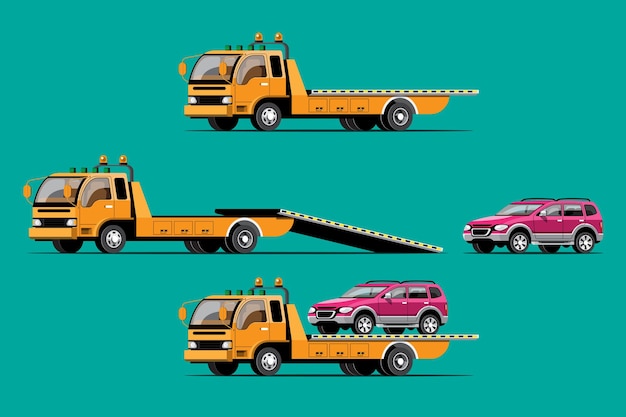When it comes to transporting heavy equipment or oversized loads, choosing the right vehicle can make all the difference. Tilt tray transport and flatbed trucks each offer unique advantages tailored to specific jobs, but which one is truly the best fit for your needs? Tilt trays excel at delivering and picking up materials in tight or challenging locations, allowing for seamless loading and unloading with minimized hassle.
On the other hand, flatbeds provide versatility and can accommodate a wider range of cargo, making them ideal for larger loads and more extensive transportation tasks. In this article, we will delve into the nuanced strengths and weaknesses of both transport options, helping you navigate the complex landscape of logistics and select the optimal solution for your projects.
Whether you’re a contractor, a transportation manager, or a business owner, understanding these options is crucial for efficient and effective operations.
Overview of Tilt Tray Transport

Tilt tray transport offers a unique solution for moving heavy machinery, equipment, and vehicles, making it a versatile option in the logistics world. Unlike traditional flatbed trucking, tilt tray vehicles feature a hydraulically operated platform that can tilt and slide loads directly onto the tray, facilitating safe and efficient loading and unloading.
This mechanism not only reduces the risk of damage to delicate items but also allows operators to transport odd-shaped or oversized loads with ease. Moreover, tilt tray transport excels in tight spaces where maneuverability is key, making it ideal for urban deliveries and construction sites.
However, it’s essential to weigh its advantages against the more general utility and stable loading conditions provided by flatbeds, especially when considering specific job requirements.
Overview of Flatbed Transport
Flatbed transport is a versatile method widely employed in the logistics and freight industries, characterized by its open platform design that allows for easy loading and unloading of various types of cargo. Ideal for oversized, heavy, or awkwardly shaped items, flatbed trailers can accommodate everything from manufacturing equipment to construction materials.
Unlike enclosed transport options, the flatbeds exposed format permits quick access and enables operators to efficiently secure loads using straps, chains, or tarps to ensure safety during transit. However, this type of transport does come with its own set of challenges, as cargo is exposed to the elements and may require additional precautions to mitigate risks during transport.
All in all, understanding the nuances of flatbed transport is crucial for making informed decisions about which transportation method aligns best with your specific job requirements.
Comparison of Tilt Tray and Flatbed Transport

When evaluating the merits of tilt tray versus flatbed transport, its essential to consider the specific requirements of your load. Tilt tray transport offers a distinct advantage with its ability to lower the tray to ground level, simplifying the loading and unloading process, especially for lower clearance or fragile items.
This mechanism allows for quicker turnaround times and minimizes the risk of damage. On the other hand, flatbed transport excels in versatility, accommodating larger, heavier items without the constraints of sidelong access.
Its open structure enables secure strapping of oversized cargo, ensuring stability during transit. Thus, the decision hinges on the nature of the cargo—tilt trays shine in accessibility and convenience, while flatbeds rule in capacity and adaptability.
Your job’s unique demands will ultimately guide you to the most suitable option.
Conclusion
In conclusion, the choice between tilt tray transport and flatbed services ultimately depends on the specific requirements of your job. Tilt tray transport offers unique advantages, particularly when it comes to loading and unloading heavy or awkwardly shaped cargo with ease and efficiency.
On the other hand, flatbed trucks provide versatility in carrying a wide array of goods and can support larger loads that require more space. By carefully considering factors such as the type of cargo, ease of access, and delivery timelines, you can make an informed decision that ensures the successful transportation of your materials.
Whether you opt for the innovative design of tilt tray transport or the adaptability of flatbeds, understanding your project’s needs will lead you to the best solution for your logistics challenges.


